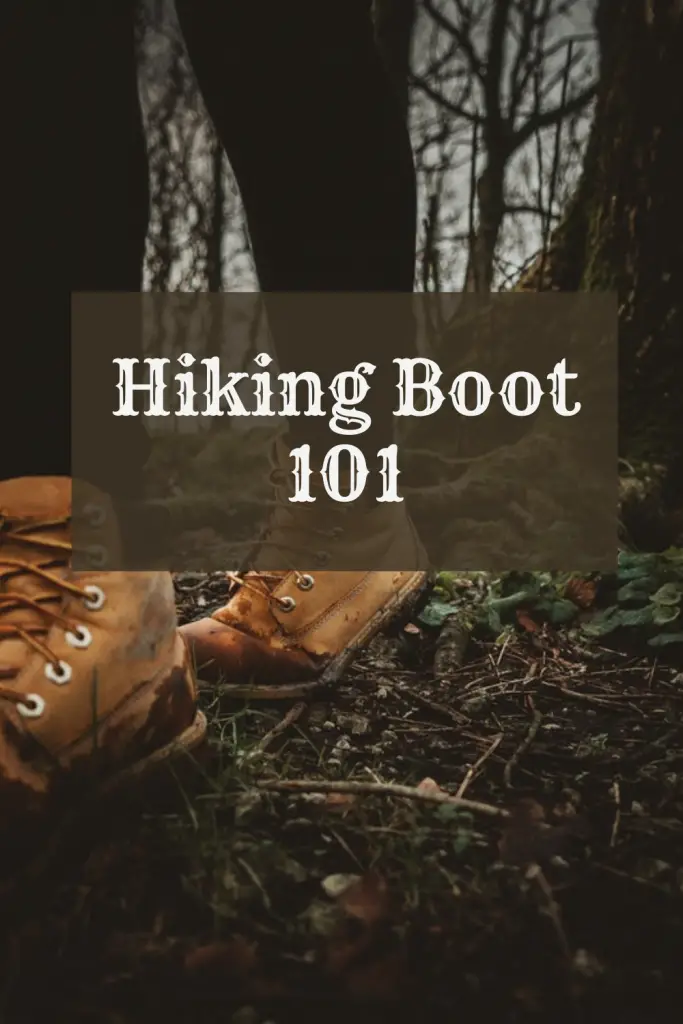
Choosing the right hiking boot is a matchmaking process. Your dream hiking boots need to sync with how and where you hike. Before you tie the knot, though, you also have to be sure they’re a perfect fit. Boots are one of the most important purchases you can make. That is why this Hiking Boots 101 is so important, to get the most enjoyment, comfort, and mileage possible, from your new footwear.
The Three Basic Components
There are three basic things you will be looking for and we will be spending time on each throughout the Hiking Boot 101 course.
- Types: With so many choices available to you, from ultralight trail shoes to mountaineering boots, how do you know what you should specifically choose?
- Components: Understanding a little more about what goes into uppers, lowers, midsoles, outsoles and other parts of a boot can help you refine your selection.
- Fit: No one ever loved a pair of ill-fitting boots. The difference between blisters and bliss is taking the time to get a great fit.
Hiking Boot Types
While there seems to be an endless array of hiking boot types, we will try and demystify each type for you. At the very least, you will easily be able to match up your activity to the proper footwear. There are many different subcategories that can go into each of these main hiking boot types. It is important to understand what your goals are for hiking. Shorter easier trips do not need much in the way of ankle support. However, if you are carrying a lot of weight you need something that can handle the weight and impact. So first determine your goals.
Hiking shoes: These are low-cut models with flexible midsoles. These types are excellent for day hiking. They are lightweight and somewhat flexible. However, they still provide you with the needed traction on wet or slippery areas.
Day hiking boots: Now we just told you that hiking shoes are great for day hikes. However, there is a specific day hiking boot. These are made with mid to high-cut support. If you are planning to do more strenuous day hikes or need added ankle support due to past injuries then you should consider a day hiking boot instead of a hiking shoe. You will need to spend some time breaking these in to prevent blisters or other injuries.
Backpacking boots: Backpacking boots are designed to carry a heavy load and provide a high level of support. You will want these if you are doing multi-day backpacking trips. This is because the boot will wrap your ankle and provide the support that should prevent twisting your ankle. They are also more durable and have thicker/stiffer soles. Some trails can get steep or have loose material. These boots will provide you with proper traction.
Hiking Boot Components
Before you even get to the point of trying on a hiking boot it is important to understand the different components of the hiking boot. This is so that you can have a logical discussion with the salesperson about why the boot doesn’t feel correct. There are many different parts of the boot that could cause pain or injury during use. Understanding each one of them could help you mitigate these impacts. Knowing some of the areas of the boots will also allow you to make selections on some boot accessories if your hiking takes you to more exotic climates or levels of expertise.
Parts of the hiking boot
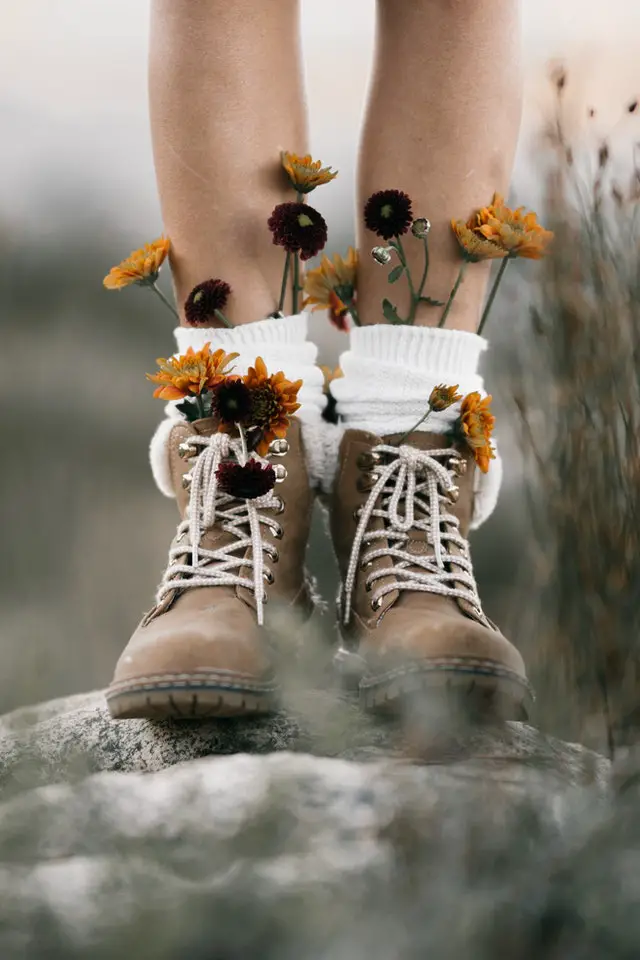
Collar: This is the top of the boot which will provide padded comfort around the leg.
Upper: This is the portion of the boot that is above the sole that provides top protection and ankle support. It is made of a multitude of different materials.
Lining: This is the thin layer that your socks will be rubbing up against.
Bellows tongue: Like any shoe, the hiking boot has a tongue. However, this type of tongue prevents water and debris from entering the front of the boot.
D-rings and Eyelets: These elements provide the means to properly lace the boots snugly. Having D-rngs will provide more foot security and a better fit.
Insulation: The material that keeps your feet warm while hiking in cooler climates. Checking the insulation is important if you are planning on doing any winter hiking.
Midsoles: The midsole is where the most cushioning from hiking impact takes place.
Plates: Some boots include plates which prevent against puncture from sharp rocks or other items.
Outsoles: The outsoles are where the rubber meets the road. This is where you will see the tread you need for traction. This is called the lug pattern. Depending on your hiking needs the tread type and material will change. For instance, a multi-directional lug pattern will provide the most grip.
Heel Cup: The heel cup provides your heel support by cupping it at the back of the boot.
Heel brake: The heel brake is a rugged patterned sole at the back of the boot meant to provide greater traction on loose soils or rocks.
Crampon welts: Welts are indents in the heel and toe that allow for crampon attachment. This is more critical for advanced hikers but knowing what attachment styles you have could be useful.
Toe box: This is the portion of the boot the surrounds, can you guess it? The toe!
Rand: This is a hard strip of rubber that protects the toe area of the boot from abrasion and injury from rocks. Some boots may include a top plate referred to as steel-toed to prevent crushing from the top.
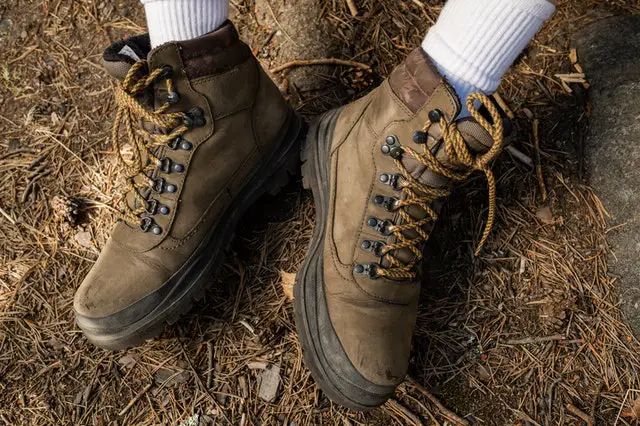
Hiking Boot Materials
Full-grain leather: Certainly more heavy than a synthetic material leather provide a durable upper material. It is waterproof but does take time to break in and dry.
Split-grain leather/suede: This is a softer and more flexible material used on the top portion of the boot to reduce weight. It breaks in quicker but is less waterproof and durable.
Synthetic: There are many synthetic materials used to provide greater breathability and weight reduction. These may include polyester, nylon, or blends. However, these do cause additional issues with durability and waterproofing though.
EVA (ethylene-vinyl acetate): This is the primary material that you will see midsoles made out of due to the soft texture. However, firmness can vary from manufacturing processes so testing the cushion is important during the fit-test.
Polyurethane: This material provides a stiffer midsole over EVA which provides more support on steep terrain.
Boot Fitting
It is important that no matter the type of boot you select it to ensure that it has a proper fit. This means that you must try on the boots before you purchase. It may help to get your foot properly measured by a foot expert. This also means you need to buy socks first! You want to do your fit-test with the socks you plan on wearing. Some prefer a lightweight wicking liner sock. These come in many materials such as wool, polypropylene, or other wicking material. Then an outer sock made of wool or wool blend. Your sock choice may be just as important to the boot because it is your first line of defense in wicking water away and keeping your feet dry.
Quick Tip! Try on boots towards the end of your day. Your feet will likely have swollen to a point comparable to when you will be out hiking which means that you will bet the proper fit!
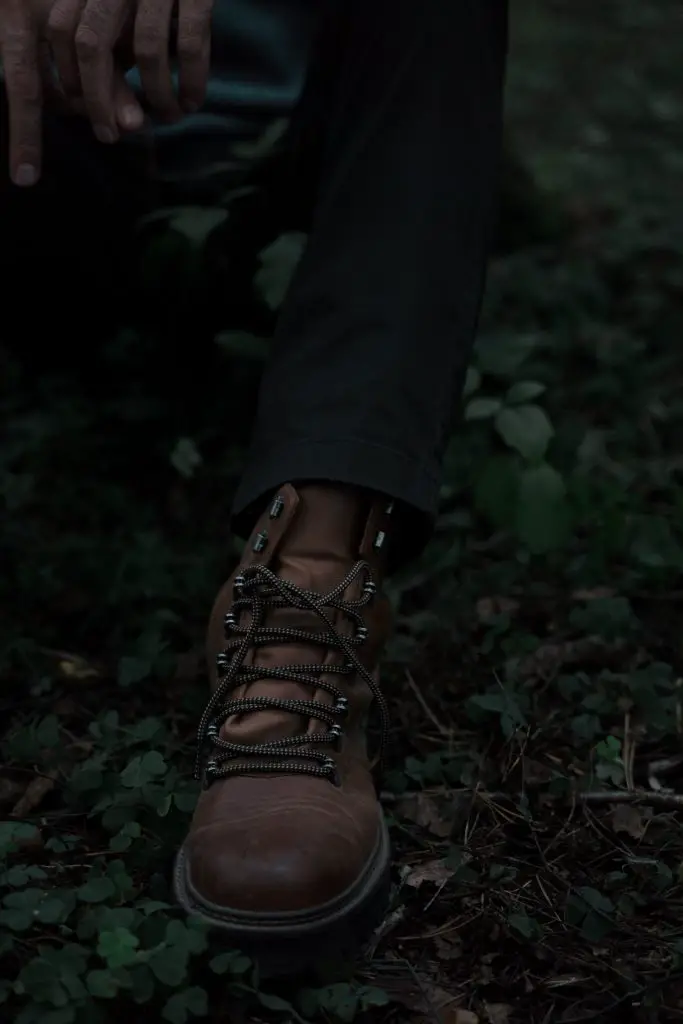
The Boot Fit-Test
Once you have your socks on you’re ready to slide your foot into the boot. Insert any orthotics into the boot now. Next, push your toes all the way to the front of the boot. Once there your finger should easily slide between your heel the back of the boot. If you have to force your finger in, the boots are too short. If there is too much room, they are too long. The best boot will have a snug fit. However, our feet change as we hike. You may not realize this but our feet swell, especially on longer hikes. You do not want to learn the hard way how to use moleskin!
Now that we are in the boot, tap your heel back into the heel cup. Doing this before lacing your boots will ensure that your foot is properly strapped in for the ride. Starting at the bottom lace up the boots snugly. Once your foot has been securely laced, your heel should not rise or fall more than a 1/4 inch. If you have a lot of movement it is likely that your boot is too wide. Finally, ensure that the balls of your feet, arch, and ankle have a snug fit. This is where the boot will break in the most.
We are almost done with the fit-test! Now, you want to check how the toes feel. This means spending some time walking around the store on stairs, inclines, and kicking on them. You should not feel strong impacts against the front of the boot and it shouldn’t slide too much either. Spending the extra time now will make the time you spend hiking more enjoyable. Each step will help you determine if the boot fits and is comfortable, likely preventing trail injuries.
Fit issues to look out for
There are some things that you should watch out for specifically as they can lead to injuries. The first is that you don’t want to feel bumps, seams, or gaps as these will likely cause rub points and blisters. Pinching feelings at the front of the boot or your toes hitting the front of the boot is bad. Finally, avoid having too much space between the top of your foot and the laces as this is a clear sign of an ill-fitting boot.
Hiking Boot Care
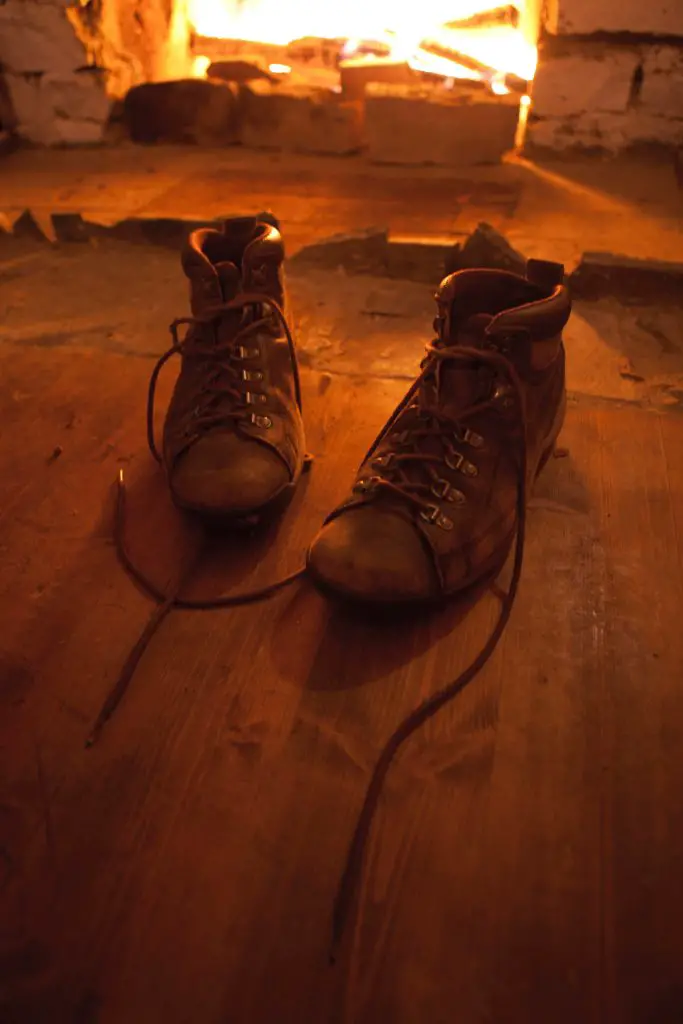
Taking care of your boots is an important part of ensuring that they last a long time and prevent blisters. You do not want to spend all of that time breaking them in only to have them wear out after a few short hikes! So a little prevention upfront can save you a lot of heartache down the road.
First, it is important to waterproof your boots. Even though some boots come from the store with waterproofing this wears off over time. It may not even be there after your break-in period. Therefore, you should treat them when they are new and often throughout the year. Especially if you are doing a lot of hiking and exposing them to water, mud, and rocks. Be cognizant that you use the right type of waterproofing for the material of your boot. Using the wrong kind can damage your boots or even void the warranty.
The best maintenance and care that you can do is keep the boots clean and dry. Once you return home from your trip you will want to wash them just like you would your other hiking clothes. Again check the manufacturers cleaning recommendations for your specific boot. However, in general, you can use lukewarm water and saddle soap to clean the leather. If you have a fabric layer or are looking to wash out the inside then you can use mild hand soap and warm water with a soft-bristled brush. In either case, you want to make sure that you completely dry them at room temperature before the next use. Exposure to heat will damage boots causing things like sole delamination. Make sure your boots are dry before storing otherwise you will likely end up with moldy feet!
Hiking Boot 101: Now you are Prepared to buy!
With the knowledge that you have been provided, you can take each of these three areas to purchase your first or next set of hiking boots. In fact, you are likely more prepared to go hiking in general. You will have a sturdy set of boots supporting your feet. I think that you are ready to tie the knot with your dream hiking boots. Remember to come back to check against the different criteria as you are in the purchasing process. Also, don’t forget the importance of trying the boots. Doing a proper fit-test will ensure that you have a successful first trip and many more as the years go by!
We can’t wait to hear about your first or next pair of hiking boots! Tell us all about them on our Twitter, Facebook, or Reddit pages!









